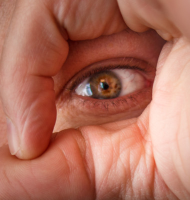
Hi, my friends and I have been enjoying using roll20 for our D&D games. We play Basic, 1E and 5E. The problem we have been running into is all the maps to our modules have secret doors written on them. So when we use those maps in our games, all the players know exactly where to search for secret doors. How do you deal with this ? We like to play many of the old time classics from 1E so they are very common modules. The pdf's that I buy on on dndclassics.com have only one set of the maps and those are with all secret doors. Les





